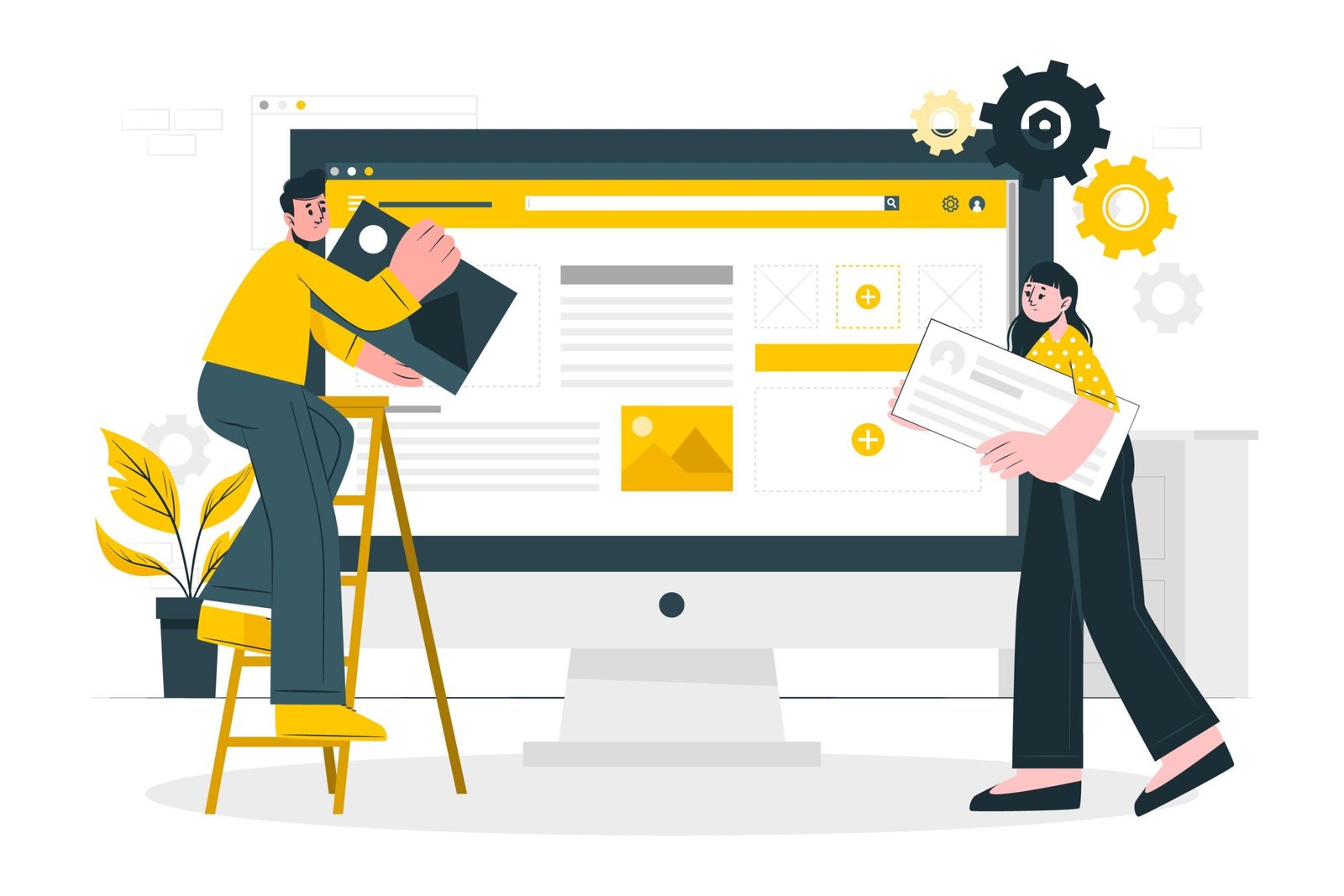
I. Introduction
Overview of the benefits of marketing automation
II. Saves Time
Examples of tasks that can be automated
How automation can free up time for other important tasks
III. Increases Revenue
Examples – How Automation can improve lead generation and sales
How automation can help nurture leads and improve customer retention
IV. Cost-Effectiveness
How automation can help to reduce marketing expenses
V. Improves Customer Experience
Examples – How automation can provide personalized content and communication
How automation can help to build stronger customer relationships
VI. Conclusion
Final Thoughts – How marketing automation can help businesses save time and increase revenue.
Marketing Automation
Marketing automation has become an important tool for businesses looking to streamline their marketing efforts and increase their return on investment. Essentially, it involves using MAP to automate repetitive marketing tasks, such as sending emails, scheduling social media posts, and managing leads. By automating these tasks, businesses can save time and improve the efficiency and effectiveness of their campaigns to drive revenue.
Learn more about – A Starter Guide to Marketing Automation: Tips and Tricks for Success
Overview of the Benefits of Marketing Automation
Marketing automation offers a range of benefits for businesses of all sizes:
- Saves time: By automating repetitive tasks, marketing automation frees up time for other important tasks.
- Increases efficiency: Automating tasks allows businesses to execute marketing campaigns more quickly and accurately, leading to better results.
- Improves lead generation: Marketing automation allows businesses to create targeted campaigns for a targeted audience that can attract and convert leads into customers.
- Enhances customer engagement: By allowing for more personalized campaigns, marketing automation can help businesses engage and connect with customers on a deeper level.
- Increases revenue: Ultimately, the increased efficiency and effectiveness of marketing automation can lead to increased revenue and business growth.
Marketing automation is a powerful tool that can help businesses achieve their marketing goals more effectively. With the right platform and strategy, businesses can save time, improve efficiency, and increase revenue through marketing automation. At Code & Peddle we help customers drive revenue from Marketing Automation, learn more.
Saves Time
One of the key benefits of marketing automation is that it can save businesses a significant amount of time. Here’s how:
Marketing automation platforms can automate repetitive and time-consuming tasks that would otherwise require manual intervention. For example, instead of manually sending out individual emails to a large email list, a business can use marketing automation software to create an email campaign and schedule it to be sent automatically to the entire list at once. This can save a considerable amount of time, particularly for businesses with large email lists or multiple campaigns running at the same time.
Examples of tasks that can be automated
Some of the marketing tasks that can be automated using marketing automation software include:
- Email marketing: Creating and sending email campaigns
- Social media scheduling: Scheduling social media posts to be published at specific times
- Lead management: Capturing and managing leads from various sources
- Analytics tracking: Monitoring and analyzing campaign performance
These are just a few examples of tasks that can be automated using marketing automation. Many other tasks can be automated based on a business’s unique needs.
How automation can free up time for other important tasks
By automating these tasks, businesses can free up time for other important tasks that require more attention and skill. For example, instead of spending hours manually scheduling social media posts, a business can use that time to focus on creating high-quality content or analyzing campaign performance. This can ultimately lead to better results and a more effective overall marketing strategy.

Increases Revenue
One of the most important benefits of marketing automation is its ability to increase revenue for businesses.
Examples – How automation can improve lead generation and sales
Marketing automation can help businesses generate more leads and close more sales in several ways. For example:
- Targeted campaigns: Marketing automation allows businesses to create targeted campaigns that are tailored to specific customer segments, increasing the chances of conversion.
- Lead scoring: Marketing automation platforms can assign scores to leads based on their level of engagement, allowing businesses to prioritize leads and focus on those that are most likely to convert.
- Automated follow-ups: By automating follow-up emails and other communications, businesses can nurture leads and keep them engaged throughout the sales process.
- Personalized content: Marketing automation allows businesses to create personalized content that speaks directly to customers’ needs and interests, increasing the chances of conversion. At Code & Peddle we use ChatGPT for writing personalized content – Emails, Follow ups, etc
These are just a few examples of how marketing automation can improve lead generation and sales. By automating and optimizing various aspects of the marketing and sales process, businesses can achieve better results and increase revenue.
How automation can help nurture leads and improve customer retention
Marketing automation can also help businesses nurture leads and improve customer retention, ultimately leading to more revenue in the long run. For example:
- Automated drip campaigns: Marketing automation platforms can be used to create automated drip campaigns that deliver targeted content to leads over time, keeping them engaged and interested.
- Personalized communication: Marketing automation allows businesses to send personalized emails and other communications to customers based on their interests and behaviors, improving customer satisfaction and loyalty.
- Upselling and cross-selling: By analyzing customer data and behavior, marketing automation can help businesses identify opportunities for upselling and cross-selling, increasing revenue per customer.
By automating various aspects of the marketing and sales process, businesses can generate more leads, close more sales, and improve customer retention and satisfaction, ultimately leading to increased revenue and business success.
Learn more about – The Impact of Marketing Automation on Sales and ROI: How business can leverage to growth
Cost-Effectiveness
Compared to traditional marketing methods, such as print advertising, television commercials, and direct mail campaigns, marketing automation in the world of Digital Marketing is often much more cost-effective. Traditional marketing methods can be expensive and time-consuming, requiring significant investments in materials, production, and distribution. Marketing automation, on the other hand, allows businesses to reach a larger audience at a lower cost, with minimal investment in materials and production.
How automation can help to reduce marketing expenses
Marketing automation can help businesses reduce marketing expenses in several ways. For example:
- Reduced labor costs: By automating various marketing tasks, businesses can reduce the need for manual labor, which can help save money on salaries and benefits.
- Targeted campaigns: Marketing automation allows businesses to create targeted campaigns that are tailored to specific customer segments, which can help reduce wasted marketing spend.
- Improved efficiency: By improving the efficiency of marketing campaigns, marketing automation can help businesses save money on marketing expenses, such as advertising costs and production expenses.
By automating tasks, improving efficiency, and targeting campaigns to specific customer segments, businesses can save money and achieve better results, ultimately leading to increased revenue and business success.
Improves Customer Experience
Marketing automation can significantly improve the customer experience for businesses by providing personalized and timely communication that resonates with each customer. Here’s how:
By using data and insights to understand customer behavior, preferences, and needs, businesses can create targeted campaigns that deliver the right message to the right customer at the right time. This can help businesses to build trust, loyalty, and long-term relationships with their customers.
Examples – How automation can provide personalized content and communication
Marketing automation can provide personalized content and communication to customers in several ways. For example:
- Personalized emails: Automation can help businesses to create personalized emails that are tailored to each individual customer based on their interests and preferences.
- Behavioral tracking: By using automation to track customer behavior, businesses can gain valuable insights into customer needs and interests, which can be used to create more personalized and relevant marketing campaigns.
- Dynamic content: Automation can help businesses to create dynamic content that is personalized to each individual customer based on their behavior and interests.
How automation can help to build stronger customer relationships
Marketing automation can help businesses to build stronger customer relationships by providing personalized and relevant communication that meets each customer’s needs. By delivering the right message at the right time, businesses can build trust, loyalty, and long-term relationships with their customers. Automation can also help businesses to improve the efficiency and effectiveness of their customer service efforts, which can lead to better customer satisfaction and loyalty.
By providing personalized content and communication, businesses can create targeted campaigns that resonate with each customer and build long-term loyalty and trust.
Conclusion
In conclusion, marketing automation can provide significant benefits for businesses of all sizes, across industries. Here’s a recap of the benefits discussed in this post:
- Saves Time: Marketing automation can automate repetitive tasks, allowing businesses to focus on more important tasks and improve productivity.
- Increases Revenue: Marketing automation can help businesses to improve lead generation, sales, and customer retention, ultimately leading to increased revenue.
- Cost-Effectiveness: Marketing automation can be a cost-effective solution for businesses looking to improve their marketing efforts, particularly when compared to traditional marketing methods.
- Improves Customer Experience: Marketing automation can provide personalized and relevant communication to customers, leading to better customer relationships and satisfaction.
By leveraging marketing automation, businesses can achieve significant benefits that can help them to save time, increase revenue, and improve the overall customer experience. In today’s competitive market, it’s more important than ever for businesses to stay ahead of the curve, and marketing automation can help them to do just that.
Final thoughts: As a Marketing Automation expert, I would recommend businesses consider implementing marketing automation into their overall marketing strategy to gain a competitive edge, save time, and increase revenue. By doing so, they can deliver personalized and relevant communication to customers, leading to better relationships and long-term loyalty. With the right automation tools and strategies, businesses can achieve significant growth and success.
Related Blog Posts –
















